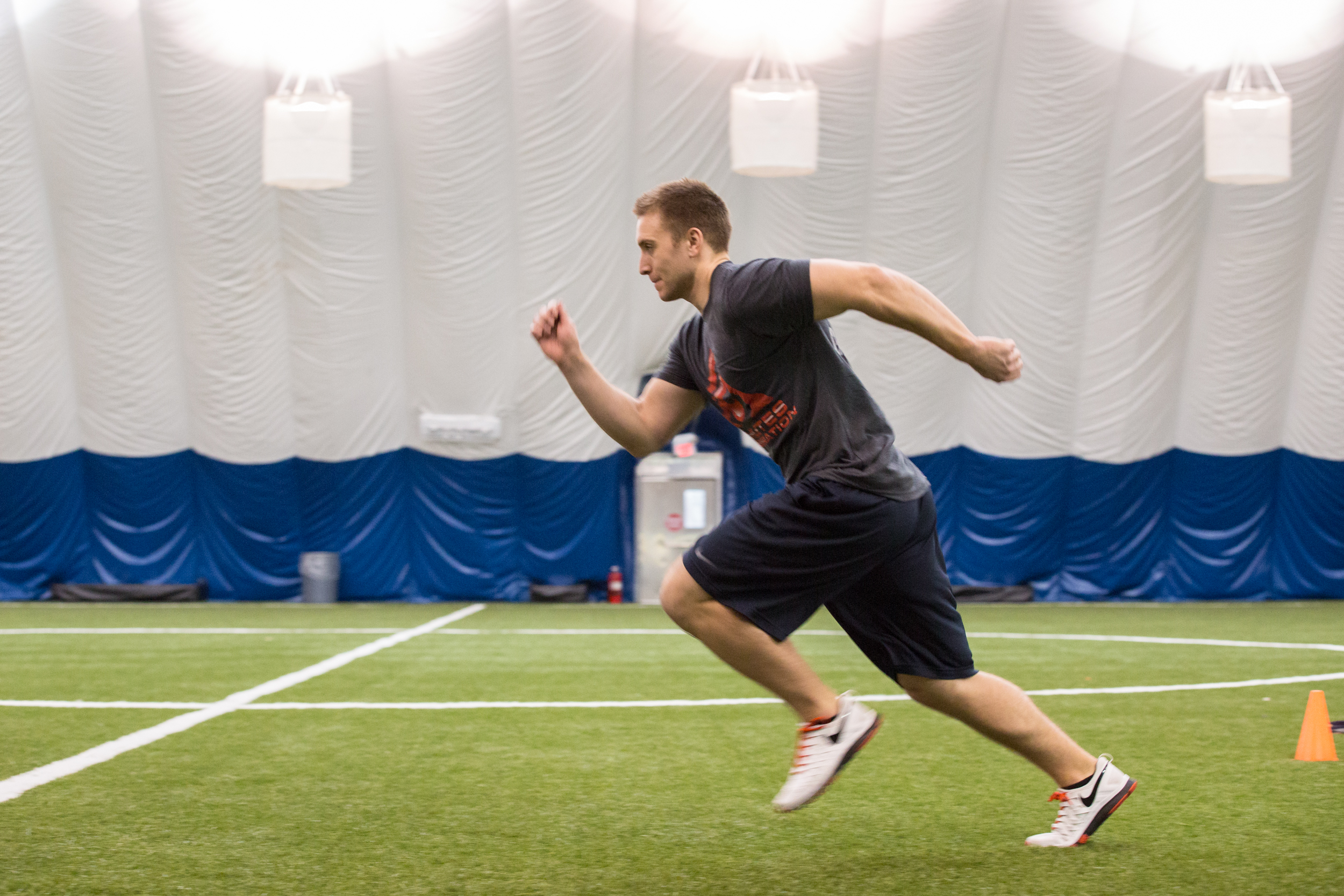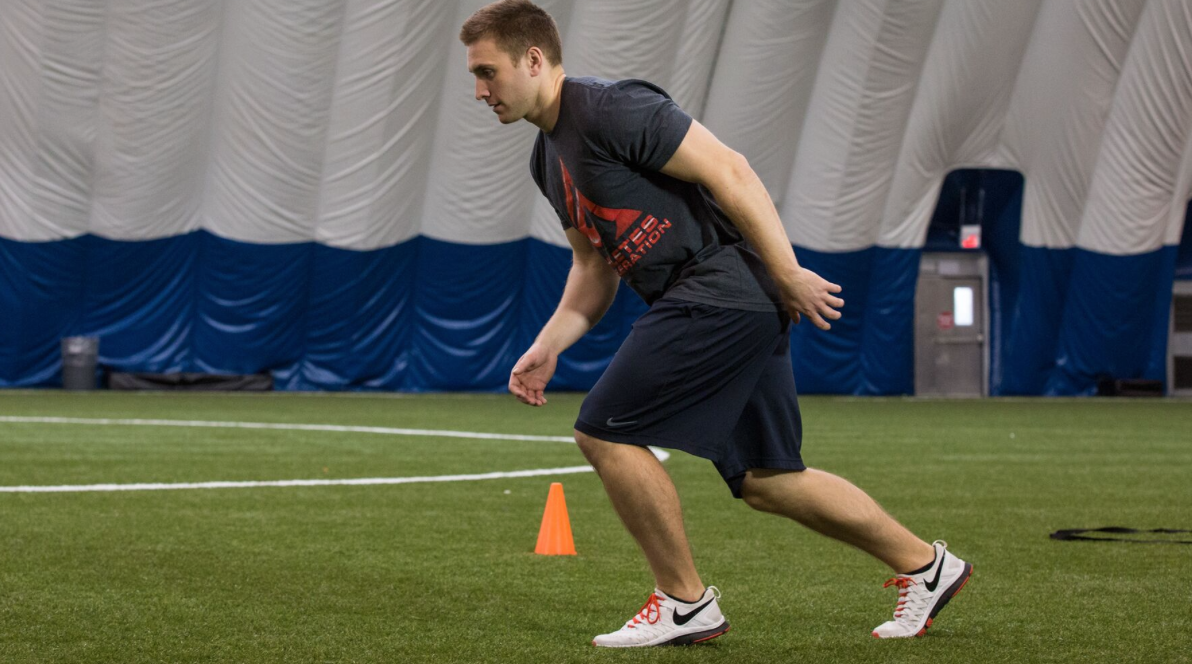GRAVITY – Speed’s Friend or Foe?
By: Karl Frank

Ever wonder what effect gravity has on our body’s ability to produce maximum speed? Since gravity is a universal force that is always upon us it must be considered in regard to how it affects human movement.
First let’s look at how gravity affects human movement in general: Gravity actually causes the body to move by its constant pull on the body’s Center of Mass (also referred to as the Center of Gravity). The Earth’s gravitational force always pulls at a body’s Center Of Mass (COM), whether it is the human body, a bowling ball, a car, etc. The human body moves when the COM shifts away from the intersection point of three cardinal planes (Frontal, Sagittal, Transverse) of the body. This shift causes torque to be produced about the joints thus causing the body to move (locomotion).
When we are considering dynamic movement such as sprinting we can either use gravity to our advantage or fight against it. This becomes extremely important when we need to accelerate and decelerate! For maximum acceleration we need to shift the upper-body forward with as significant of a lean as possible. This will cause the COM to shift forward and away from the body. Since gravity always pulls at an object’s COM when body mass is manipulated in this manner gravity will pull the body forward and assist us. A great example of this is when sprinters come out of the blocks and are in a “drive phase” posture.
A sprinter will not remain in this posture over the course of the sprint because once inertia is overcome this is not a mechanically efficient position to be in – which I won’t get into here but perhaps in a different article on body mass and inertia. If the same sprinter is in an upright body position and the body’s COM is close to the body then gravity is pulling the body straight down and working against the sprinter. This is a very common mistake that junior athletes make when trying to get a good jump and produce maximum speed as quickly as possible.
How pronounced should the forward upper-body lean be? Answer: As pronounced as possible without losing balance. As with all sports movement there is a “point of diminishing returns” with regard to moving body segment mass at which body control and balance are adversely affected. When sprinting we want to manipulate body mass and maximize range of motion about the hips and shoulders without adversely affecting performance.
**The position of the head plays a significant role in upper-body lean. The head is actually a major balance factor. For maximum upper-body lean the head should be DOWN. Very important to note here that by the head being down we do not want the chin tucked tightly to the chest, but rather the head should be down and FORWARD. For proper down position of the head the athlete should see the ground 3 or 4 yards ahead of him, not directly under him. With the head in the proper position the COM is extended slightly further and this small extension can make a difference.
In summary, throughout the course of a sprint the athlete should maintain a forward lean of the upper-body, which will allow for greater top speed while reducing the energy expenditure required to perform the sprint. The shorter the sprint the more pronounced the forward lean should remain. (Clearly there are significant physiological factors at play in producing top sprint speed that are not covered in this article).
About The Author:
Karl L. Frank, M.A.
Owner and developer of SPEEDOLOGY® – the science of sport-specific speed and performance.
The contents of this article are © Copyright 2007 by Applied Movement Science, Inc. and may not be reprinted or re-transmitted in whole or in part without the express written consent of AMS, Inc.

—————————————————————————–





0 Comments for “GRAVITY – Speed’s Friend or Foe?”